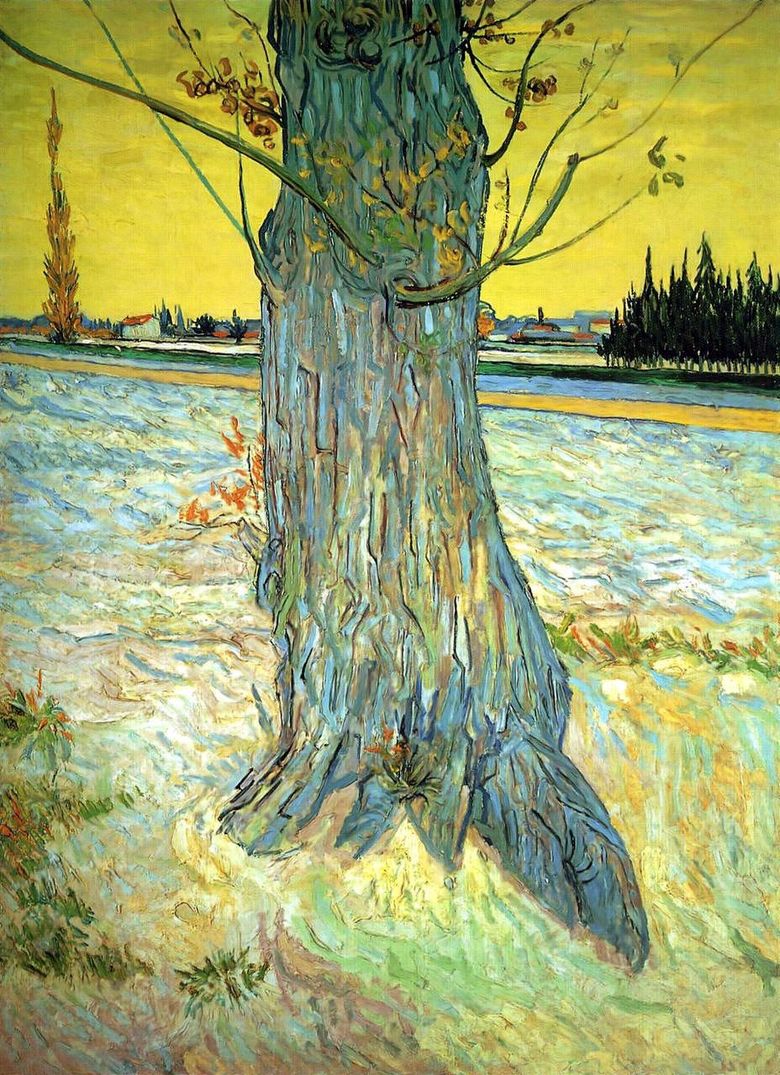
The painting “The trunk of the old yew” was written in October 1888 in Arles. This is one of the most unusual paintings by Van Gogh. All the attention of the artist, passionately fond of nature, trying to convey its essence through colors, is concentrated here almost in one detail.
As if admiring it, Van Gogh carefully tries to determine each shade of color on the old bark. Any, even the most insignificant color nuance is carefully found and put on the canvas. The author is so fond of shades that the main colors of objects are practically lost, giving way to colorful overflows.
The yellow color for Van Gogh meant sun and life, but here it rather creates an atmosphere of some anxiety, completely filling the sky. The blue shades of the earth and grass are not a bit combined with the yellow of the sky, but with the help of this coldness Van Gogh conveys the mood of autumn withering. A wide horizon line with trees and small buildings contrasts with the monumental, bulky old trunk that fills the entire foreground of the picture.
The old yew seems to be clinging to the roots of the earth, its cracked bark is devoid of brilliance, and the dry branches are raised prayerfully. Trying to convey the inner essence of everything that can be seen in nature, Van Gogh finds beauty in every detail and carefully transfers it to the canvas.
 Alley in the Park d’Argenson in Asnieres by Vincent Van Gogh
Alley in the Park d’Argenson in Asnieres by Vincent Van Gogh Still life with apples by Vincent Van Gogh
Still life with apples by Vincent Van Gogh Old Yew Trunk – Vincent Van Gogh
Old Yew Trunk – Vincent Van Gogh Lilac bush by Vincent Van Gogh
Lilac bush by Vincent Van Gogh Peach in bloom by Vincent Van Gogh
Peach in bloom by Vincent Van Gogh Wheat field with a lark by Vincent Van Gogh
Wheat field with a lark by Vincent Van Gogh Portrait of Pope Tangi II by Vincent Van Gogh
Portrait of Pope Tangi II by Vincent Van Gogh Undergrowth II by Vincent Van Gogh
Undergrowth II by Vincent Van Gogh